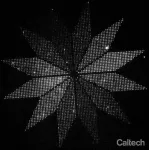(Press-News.org) Scientists have used a technique to grow bile duct organoids - often referred to as 'mini-organs' - in the lab and shown that these can be used to repair damaged human livers. This is the first time that the technique has been used on human organs.
The research paves the way for cell therapies to treat liver disease - in other words, growing 'mini-bile ducts' in the lab as replacement parts that can be used to restore a patient's own liver to health - or to repair damaged organ donor livers, so that they can still be used for transplantation.
Bile ducts act as the liver's waste disposal system, and malfunctioning bile ducts are behind a third of adult and 70 per cent of children's liver transplantations, with no alternative treatments. There is currently a shortage of liver donors: according to the NHS, the average waiting time for a liver transplant in the UK is 135 days for adults and 73 days for children. This means that only a limited number of patients can benefit from this therapy.
Approaches to increase organ availability or provide an alternative to whole organ transplantation are urgently needed. Cell-based therapies could provide an advantageous alternative. However, the development of these new therapies is often impaired and delayed by the lack of an appropriate model to test their safety and efficacy in humans before embarking in clinical trials.
Now, in a study published today in Science, scientists at the University of Cambridge have developed a new approach that takes advantage of a recent 'perfusion system' that can be used to maintain donated organs outside the body. Using this technology, they demonstrated for the first time that it is possible to transplant biliary cells grown in the lab known as cholangiocytes into damaged human livers to repair them. As proof-of-principle for their method, they repaired livers deemed unsuitable for transplantation due to bile duct damage. This approach could be applied to a diversity of organs and diseases to accelerate the clinical application of cell-based therapy.
"Given the chronic shortage of donor organs, it's important to look at ways of repairing damaged organs, or even provide alternatives to organ transplantation," said Dr Fotios Sampaziotis from the Wellcome-MRC Cambridge Stem Cell Institute. "We've been using organoids for several years now to understand biology and disease or their regeneration capacity in small animals, but we have always hoped to be able to use them to repair human damaged tissue. Ours is the first study to show, in principle, that this should be possible."
Bile duct diseases affect only certain ducts while sparing others. This is important because in disease, the ducts in need of repair are often fully destroyed and cholangiocytes may be harvested successfully only from spared ducts.
Using the techniques of single-cell RNA sequencing and organoid culture, the researchers discovered that, although duct cells differ, biliary cells from the gallbladder, which is usually spared by the disease, could be converted to the cells of the bile ducts usually destroyed in disease (intrahepatic ducts) and vice versa using a component of bile known as bile acid. This means that the patient's own cells from disease-spared areas could be used to repair destroyed ducts.
To test this hypothesis, the researchers grew gallbladder cells as organoids in the lab. Organoids are clusters of cells that can grow and proliferate in culture, taking on a 3D structure that has the same tissue architecture, function and gene expression and genetic functions as the part of the organ being studied. They then grafted these gallbladder organoids into mice and found that they were indeed able to repair damaged ducts, opening up avenues for regenerative medicine applications in the context of diseases affecting the biliary system.
The team used the technique on human donor livers taking advantage of the perfusion system used by researchers based at Addenbrooke's Hospital, part of Cambridge University Hospitals NHS Foundation. They injected the gallbladder organoids into the human liver and showed for the first time that the transplanted organoids repaired the organ's ducts and restored their function. This study therefore confirmed that their cell-based therapy could be used to repair damaged livers.
Professor Ludovic Vallier from the Wellcome-MRC Cambridge Stem Cell Institute, joint senior author, said: "This is the first time that we've been able to show that a human liver can be enhanced or repaired using cells grown in the lab. We have further work to do to test the safety and viability of this approach, but hope we will be able to transfer this into the clinic in the coming years."
Although the researchers anticipate this approach being used to repair a patient's own liver, they believe it may also offer a potential way of repairing damaged donor livers, making them suitable for transplant.
Mr Kourosh Saeb-Parsy from the Department of Surgery at the University of Cambridge, joint senior author, added: "This is an important step towards allowing us to use organs previously deemed unsuitable for transplantation. In future, it could help reduce the pressure on the transplant waiting list."
INFORMATION:
The research was supported by the European Research Council, the National Institute for Health Research and the Academy of Medical Sciences.
Reference
Sampaziotis, F et al. Cholangiocyte organoids can repair bile ducts after transplantation in human liver. Science; 19 Feb 2021
Organoids grown from bile duct epithelial cells can be used to repair damaged bile ducts in transplanted human livers, researchers report. The results provide proof of concept for using ex vivo cell-based therapy to improve organ function before transplantation, which could ultimately increase the number of useable organs on the transplant waiting list. Bile produced in the liver is carried to the small intestine through a network of bile ducts formed by biliary epithelial cells known as cholangiocytes. While crucial for digestion, bile becomes toxic when it accumulates in the liver. As a result, chronic liver diseases that affect cholangiocytes often result in liver failure ...
CAMBRIDGE, MA -- Bacteria have many ways to evade the antibiotics that we use against them. Each year, at least 2.8 million people in the United States develop an antibiotic-resistant infection, and more than 35,000 people die from such infections, according to the U.S. Centers for Disease Control.
Most of the mutations known to confer resistance occur in the genes targeted by a particular antibiotic. Other resistance mutations allow bacteria to break down antibiotics or pump them out through their cell membranes.
MIT researchers have now identified another class of mutations that helps bacteria develop resistance. In a study of E. coli, they discovered that mutations to genes involved ...
The temporary breakdown of Earth's magnetic field 42,000 years ago sparked major climate shifts that led to global environmental change and mass extinctions, a new international study co-led by UNSW Sydney and the South Australian Museum shows.
This dramatic turning point in Earth's history - laced with electrical storms, widespread auroras, and cosmic radiation - was triggered by the reversal of Earth's magnetic poles and changing solar winds.
The researchers dubbed this danger period the 'Adams Transitional Geomagnetic Event', or 'Adams Event' for short - a tribute to science fiction writer Douglas Adams, who wrote in The Hitchhiker's Guide to the Galaxy that '42' was the answer to life, the universe, and everything.
The findings are published today ...
"For decades, chemistry has been governed by two ambitions goals," says Professor Stefan Tautz, head of the Quantum Nanoscience subinstitute at END ...
Cygnus X-1, a binary star system first discovered in 1964, comprises one of the closest black holes to Earth. New observations of this black hole, the first ever detected, have led astronomers to question what they know about the Universe's most mysterious objects.
An international team, including researchers from the National Astronomical Observatories of the Chinese Academy of Sciences (NAOC), recently found that the stellar-mass black hole in the Cygnus X-1 binary system has a mass 21 times the mass of the Sun and rotates at a speed close to the speed of light.
The study was published in Science on Feb. 18.
The researchers used the Very Long Baseline Array - a continent-sized radio ...
Engineers have developed a technique that allows them to precisely place microscopic devices formed from folded DNA molecules in not only a specific location but also in a specific orientation.
As a proof-of-concept, they arranged more than 3,000 glowing moon-shaped nanoscale molecular devices into a flower-shaped instrument for indicating the polarization of light. Each of 12 petals pointed in a different direction around the center of the flower, and within in each petal about 250 moons were aligned to the direction of the petal. Because each moon only glows when struck by polarized light matching its orientation, the end result is a flower whose petals light up in sequence as the polarization of light shined upon it is rotated. The flower, which ...
Inhibitors based on approved drugs and designed to disrupt the SARS-CoV-2 viral protein Mpro display strong antiviral activity both in vitro and in a transgenic mouse model, a new study reports. While vaccines are an important tool in the fight against COVID-19, it remains a high priority to develop antiviral drugs, especially with the rise of variants that may partially evade vaccines. The viral protein Mpro is a protease that is required for cleaving precursor polyproteins into functional viral proteins. This essential function makes it a key drug target. Jingxin Qiao et al. designed 32 ...
The COVID-19 pandemic's heavy toll on older Americans highlights the need to strengthen the nation's safety net for people in need of long-term services and supports, an Oregon Health & Science University researcher and co-authors argue in a new report published by Milbank Quarterly.
The report proposes a system of universal coverage to support the long-term care of all older Americans.
"This approach would protect against financial catastrophe and end the current system that is based on the need to be financially destitute in order to access coverage via Medicaid," ...
BOSTON -- COVID-19, the source of the current pandemic, may be caused by a single virus, but it has a variety of presentations that make treatment difficult. Children, for example, almost exclusively experience mild or asymptomatic COVID-19, while adults can develop severe or even fatal COVID-19. But children who contract COVID-19 are at risk for a rare but serious syndrome called multisystem inflammatory syndrome in children (MIS-C). Severe cases of MIS-C can lead to cardiac disease and ventricular failure, and require hospitalization and intense medical support.
Researchers Galit Alter, PhD, core member of the Ragon Institute of MGH, MIT and Harvard, and Lael Yonker, MD, ...
The effects of selective serotonin reuptake inhibitors (SSRIs) and other conventional antidepressants are believed to be based on their increasing the levels of serotonin and noradrenalin in synapses, while ketamine, a new rapid-acting antidepressant, is thought to function by inhibiting receptors for the neurotransmitter glutamate.
Neurotrophic factors regulate the development and plasticity of the nervous system. While all antidepressants increase the quantity and signalling of brain-derived neurotrophic factor (BDNF) in the brain, the drugs have so far been thought to act on BDNF indirectly, through serotonin or glutamate receptors.
A new study published this week in Cell demonstrates, however, that antidepressants bind directly to a BDNF receptor known as TrkB. This finding challenges ...


